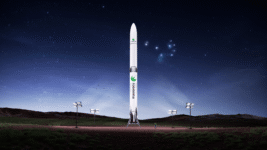
Nikon SLM Solutions & ArianeGroup to Collaborate on Large-Scale Metal 3D Printed Components – 3DPrint.com
Just after announcing a collaboration with RocketLab, Nikon SLM Solutions is now announcing another with French space leaders ArianeGroup. The goal of their partnership will be to make metal additive components larger than one cubic meter. That includes an “exclusive initial machine delivery” to ArianeGroup of a large-scale powder bed fusion (PBF) system.
According to a press release sent by Nikon SLM Solutions, “additive manufacturing continues to evolve as a foundational tool for the space industry.” Its technology will help enable high-performance, lightweight components, as well as reduce assembly needs, giving its newest partner “new opportunities to enhance lead time and reduce costs on complex, ultra-large-scale hardware for liquid propulsion critical applications.”
Nikon SLM Solutions Sales Manager Julien Frugier stated,
“Ariane Group is a key global player in the space industry. Our collaboration with ArianeGroup demonstrates the effectiveness of our technology and shows how Nikon SLM’s innovations can meet the demanding needs of strategic, high-tech customer.”
ArianeGroup is Europe’s launch champion. Overshadowed by the headline- and money-hungry SpaceX and New Space revolution, Ariane has been making launch systems since its inception as a combination of some Safran and Airbus launch activities. With revenues of $3 billion and over 8,300 employees, the company is a linchpin in Europe’s space activities. It is also essentially the only game in town, in Europe, for a local ICBM and heavy launch capability independent of Russia and the US. In a fraught world, independence matters, and Ariane’s abilities in missiles and satellite launch have taken on new meaning. Nikon SLM’s ability to cater to independent New Space companies, the European Ariane, and US defense missions means that it has managed to be a trusted player to those with diverging instincts and interests. We all want to do more to make more ourselves, and we all rely on Nikon SLM, which is a very advantageous scenario for the company. Furthermore, with Rocket Lab and Ariane, Nikon SLM captures two important keystone clients with whom to help build a future large-format offering.
Work on the M51 strategic missile for France and the Ariane 6, as well as the Maia launchers for commercial use, put Ariane at the forefront of launcher development. Parts larger than a cubic meter will be a tall order to make. That engagement points to either large pressure vessels being made with additive, or expansion into more of the total propulsion systems. Currently, virtually all current generation launch systems make extensive use of additive for propulsion. This saves weight, allows for quicker iteration, and lets companies make lower part count, more flow-optimized components with greater efficiency. The more the total “path of power” of whatever energy you’re harnessing is made with additive, the more it can be optimized. The larger and more complex the system, the more gains can be eked out of it by designing it from the ground up with additive in mind. To put it differently, if I copy a bracket design made for CNC, and make it with additive, my performance and cost will be preposterously idiotic. If, on the other hand, I redesign helicopters to fully utilize the optimal flow and storage of energy throughout the entire craft using additive, I’ll have revolutionary performance.
So large size does have a significant impact on performance and overall competitiveness. In this case, the launcher industry is worth $14 billion, but the satellite industry is $293 billion, and the total space industry could be $419 billion. And the first mile to space is through launchers. The more efficient they can be and the quicker they can be made, the more likely you are to win. The lever for revenue in New Space is, therefore, how fast and how big your 3D printer can make copper or Inconel parts. What will the architecture be of the future LPBF system that Nikon SLM is working on? Perhaps it could be an even bigger NXG? But, maybe it would be more interesting still if it were to be based on Adira’s Tiled Laser Melting, which was acquired by Nikon SLM. That system moves the process chamber over tiles, allowing for more efficient economics on the machine and faster build speeds of larger components. Adira’s system was already capable of making parts one meter in diameter, and perhaps Nikon SLM has refined it. Undoubtedly, this move with ArianeGroup is a big win for Nikon SLM, and it cements their lead over rivals in the sector. I think that we’re all curious as to what new architecture the firm is working on, but finding such key partners to bankroll it must mean that it has vast potential.
Subscribe to Our Email Newsletter
Stay up-to-date on all the latest news from the 3D printing industry and receive information and offers from third party vendors.










